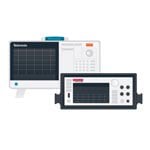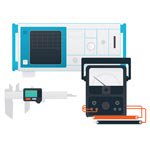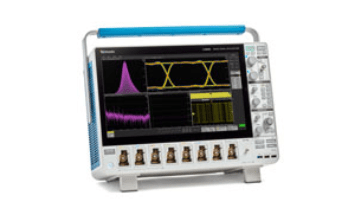Contact us
Call us at
Available 6:00 AM – 5:00 PM (PST) Business Days
Download
Download Manuals, Datasheets, Software and more:
Feedback
Logic Analyzer
Verify and debug digital systems with a logic analyzer. Ideal for digital measurements involving numerous signals or challenging trigger requirements, logic analyzers, logic analyzer software, and oscilloscopes with logic analyzer functionality make it easier for you to probe, acquire, decode, analyze, and validate the performance of your microprocessor, FPGA, or memory design.
History of the logic analyzer
When commercial microprocessors were first developed, the engineers designing these systems struggled to debug designs using only an oscilloscope. Microprocessors required more inputs than most oscilloscopes at the time could accommodate, making system design verification extremely difficult. In 1973, the logic analyzer was invented so engineers could keep pace with the rapid developments in digital technology. This new device could accommodate far more channels than an oscilloscope and was specifically designed to analyze digital signals.
The logic analyzers remained the instrument of choice for debugging digital systems until the invention of the mixed signal oscilloscope (MSO) in 2012, which include logic analyzer functionality. MSOs are able to display, compare, and trigger both analog and digital signals. They have far more channels than other digital oscilloscopes and can take the place of logic analyzers on certain benches depending on an engineer’s test and measurement needs.

Logic analyzer vs. oscilloscope
Modular logic analyzers, USB logic analyzers, MSOs, and mixed domain oscilloscopes (MDO) are all commonly found on the benchtops of electrical engineers. While logic analyzers and oscilloscopes perform similar functions, there are important distinctions between them. In general, logic analyzers can analyze far more channels than an oscilloscope—though some MSOs can analyze up to 48 signals. While oscilloscopes can measure both analog and digital signals, logic analyzers operate on digital signals, triggering on fault and data timing relationships to identify violations, detecting glitches for digital debugging. An oscilloscope - when used with oscilloscope probes - is the fundamental tool for general purpose signal viewing and offers greater functionality than a logic analyzer. In fact, oscilloscopes offer higher sample rate, higher bandwidth and memory. These capabilities allow oscilloscopes to capture higher signal details and potential aberrations, like overshoots, ringing and more.
When should I use a logic analyzer?
Use a logic analyzer when you need to:
- Debug elusive, intermittent problems with digital systems
- Trace and correlate hundreds of digital signals simultaneously
- Trace embedded software execution
- Capture state-mode data
- Get greater analytic depth and insight into digital signals
- Make measurements with challenging trigger requirements

When should I use an oscilloscope?
Use an oscilloscope when you need to:
- Capture and measure analog signals
- Know specific signal amplitudes, power, current, phase values, or edge measurements such as rise/fall times
- Characterize signal integrity
- Characterize signal stability, including jitter and jitter spectrum
- Capture data points over a longer span of time
- View signals in real time

Find the best oscilloscope with logic analyzer functionality for your bench
Tektronix offers a wide range of mixed signal oscilloscopes and mixed domain oscilloscopes embedded with logic analyzer functionality. Save space on your bench with these two-in-one instruments.
Find the oscilloscope that's right for your application.






